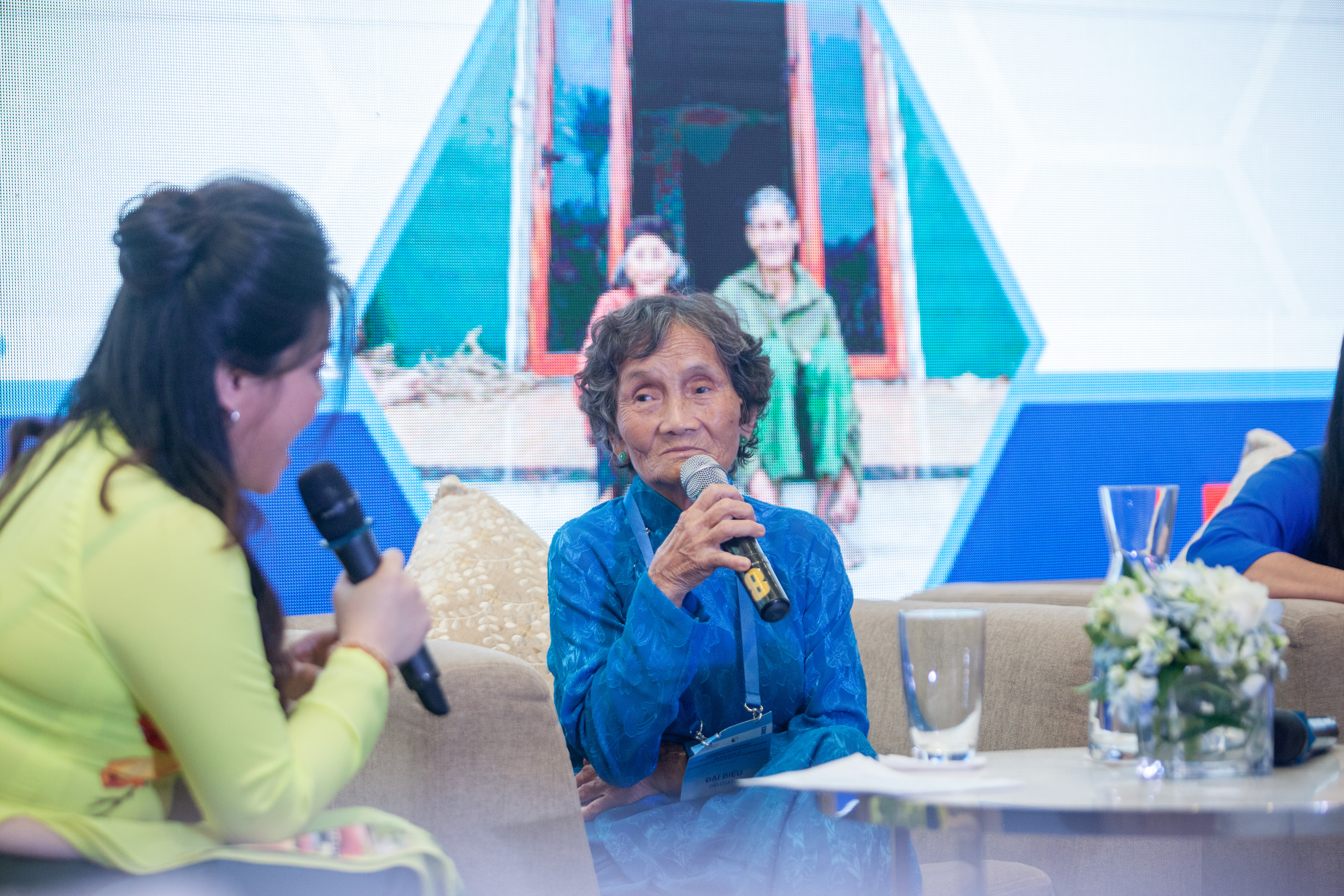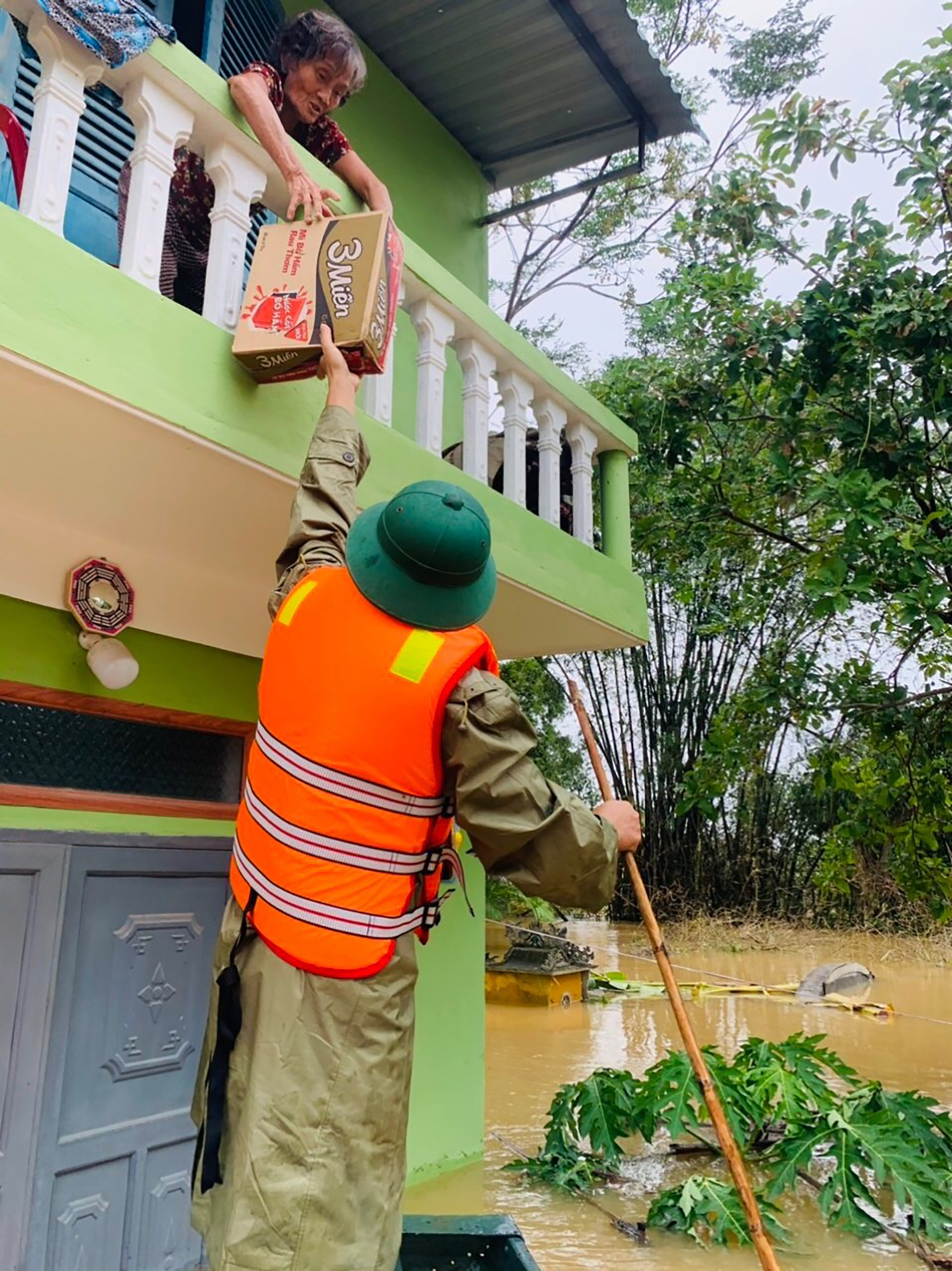Resilient Housing for most vulnerable coastal community – local solution to global challenge
December 22, 2022

UNDP team presented to the UN Secretary General the storm and flood resilient housing model.
When the UN Secretary-General António Guterres visited Viet Nam in October 2022, UNDP team had a chance to share with him the storm and flood resilient housing model which had successfully helped most vulnerable coastal families withstand the historical floods and storms.
The UN Secretary-General listened attentively to the presentation and asked if the resilient house was expensive. Dao Xuan Lai, Head of UNDP Climate Change and Environment Unit, responded to the UN Secretary-General that it cost less than USD4,000 to build such a house. By using locally available materials and mobilizing locally trained masons, each house is very affordable for replication and scale-up in respective communities.
Over the past three decades, climate-related disasters in Viet Nam have caused an average estimated direct annual loss of between 1 and 1.5 per cent of GDP. People in coastal areas observed that in recent years, storms and floods happened more often and caused innumerable deaths, destroyed homes, personal assets, and livelihoods. It is critical to help vulnerable communities cope with climate-related risks and impacts.
In his remarks at the ceremony to commemorate the 45th anniversary of Viet Nam - UN partnership, the UN Secretary General emphasized: “Viet Nam – with over 3000km of coastline and many low-lying cities and delta regions – is on the frontlines against climate catastrophe. Without much more concerted global climate action, over one million Vietnamese could be pushed into poverty in this decade alone. Wealthier countries must keep their promise to provide $100 billion to support developing countries to build resilience. At least half of all international climate finance must go to adaptation, in support of populations affected already by climate change”.
Since 2018, UNDP in collaboration with national and international partners, has supported poor households in some of the most disaster-prone areas in central coastal provinces to build storm- and flood- resilient houses. These houses are designed specifically to withstand the strong winds and floods that impact the coastal provinces. The houses have the floor of at least 1.5 meters higher than the historic flood level. The roof is reinforced with sturdy braces. And there is a garret for people to move property and themselves up when it is flooding.
The houses were designed jointly with the Ministry of Construction and provincial Departments of Construction, within the framework of the UNDP project "Improving the resilience of vulnerable coastal communities to climate change-related impacts in Viet Nam," funded by the Green Climate Fund. As a result, the houses are not only tailored to the conditions of each location but are also suited to local cultures and traditions. All these houses very successfully withstood the successive storms and large-scale floods that hit Viet Nam in 2020. Exactly as designed, they safely protected the lives and livelihoods of their owners, and in many communities also protected neighbors living nearby as the resilient houses become shelters for them during the storms and floods. .

Ms. Hoang Thi Thoan shared her experiences withstanding severe flooding with her new resilient house at the International Conference on Sustainable Ocean Economy and Climate Change Adaptation in Ha Noi Capital.
Thanks to the resilient house, Ms. Hoang Thi Thoan, 70 years old, in Phong Chuong commune, Phong Dien district, Thua Thien Hue province, and many vulnerable coastal families withstood strong winds and floods during the historical floods in 2020. Ms. Thoan was invited to the International Conference on Sustainable Ocean Economy and Climate Change Adaptation in Ha Noi Capital to share her experiences withstanding severe flooding with her new resilient house.
She recalled every storm season in the past as the season of anxiety. The storm has been being stronger and flood being higher each year, the old house was dilapidated and could no longer protect people. She used to have to evacuate, leaving her house and everything destroyed every year. With her new resilient house, Ms. Thoan overcame the historic storm and flood in 2020 by staying on the garret, safely waiting for people to come and support her. “I'm very glad that when the storm season comes, I don’t have to worry anymore! I am so grateful for the support!" said Ms. Thoan.

Ms. Thoan overcame the historic storm and flood in 2020 by staying on the garret and receiving food from the army.
So far, more than 7,100 resilient homes have been built for most vulnerable coastal families, especially those whose head are women, people with disability, or elderly people. UNDP continues to pursue innovative ways of adapting the houses to new situations. For example, resilient housing has been adjusted to suit the much more powerful winds that affect coastal islands. This new model not only has enhanced resilient structures, but also has solar panels that are able to provide a renewable source of power for poor households.
In Viet Nam, the urgent need is huge. According to a recent study that UNDP conducted with the Ministry of Construction, over 110,000 families still live without safe housing across 28 coastal provinces, including more than 25,000 in coastal districts. More support is needed to extend this successful model to the needed families across the coastal provinces in Viet Nam
The total cost is around $330 million to provide housing for climate vulnerable in Viet Nam. UNDP believes that it is possible in a joint collaborative well planned effort that blends both public and private financing. It is an essential investment for ensuring a Just Climate Transition that benefits the most vulnerable and left behind.
"An Cu Lac Nghiep" - popular Vietnamese saying - means that only with a proper house will you attain peace of mind, settle down, and thrive. The home is the most important household asset, and storm- and flood-resilient housing is one of the most effective ways to reduce the risk to people’s lives and livelihoods and allow them to recover more quickly after disasters.
Scaling up of this successful resilient housing model is important for Viet Nam, given its vulnerability, high exposure to climate risk, and huge need. The features of this resilient housing model should be further promoted for other coastal locations in Viet Nam to enhance the resilience to storms and floods of the most vulnerable households and communities.
Similarly, replication for other vulnerable coastal states should also be considered, given the universal applicability of the houses’ technical designs. While the details might differ from place to place, their essential features have the potential to be replicated for public health care centers, schools, warehouses, and private houses in the region.

 Locations
Locations



